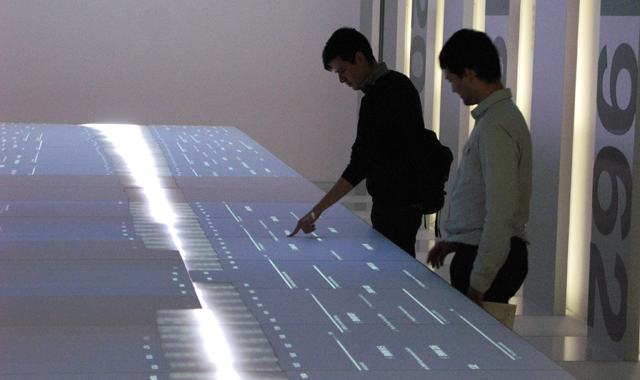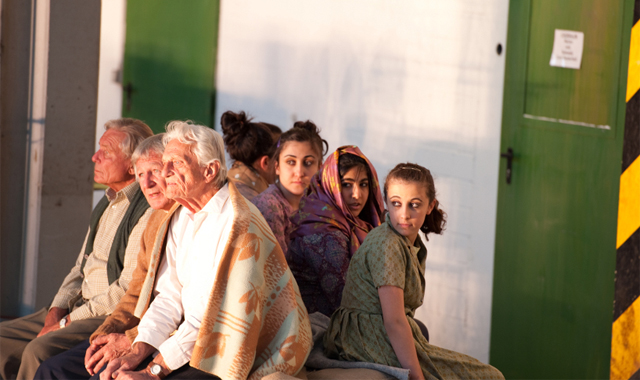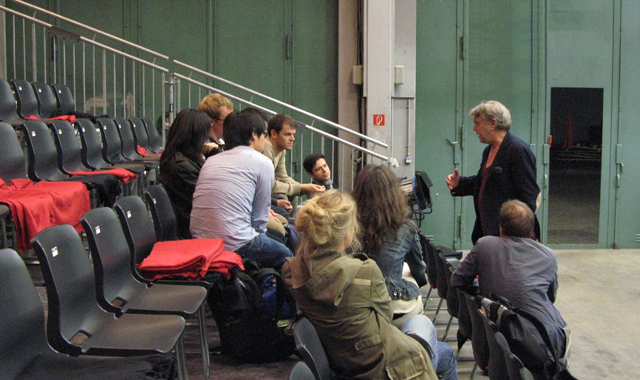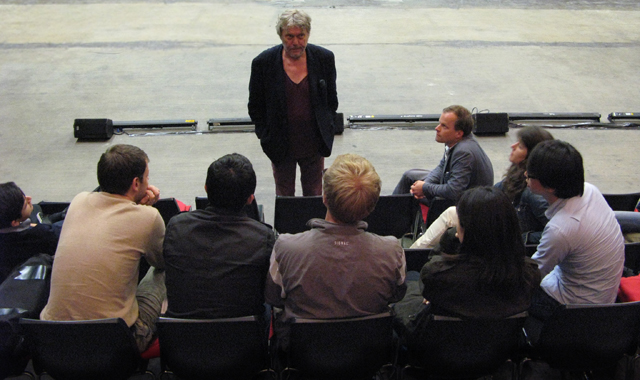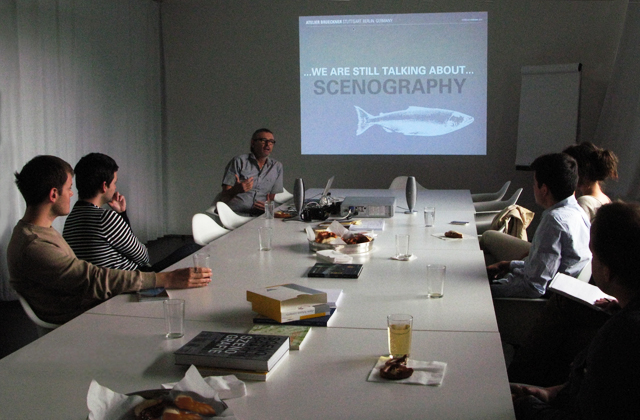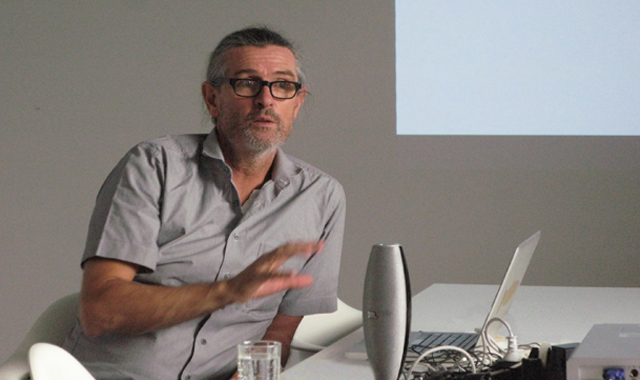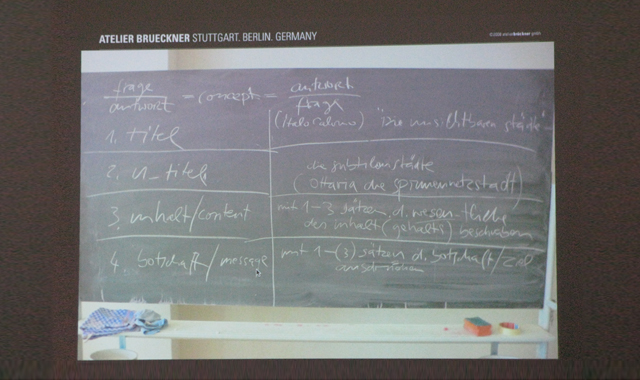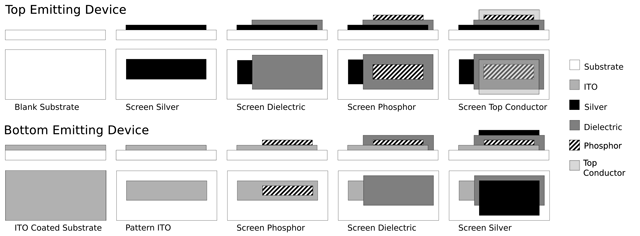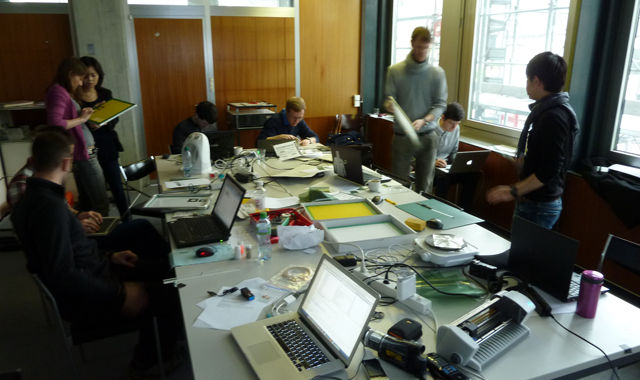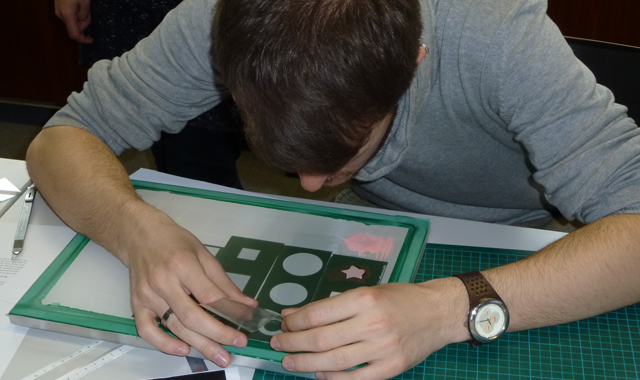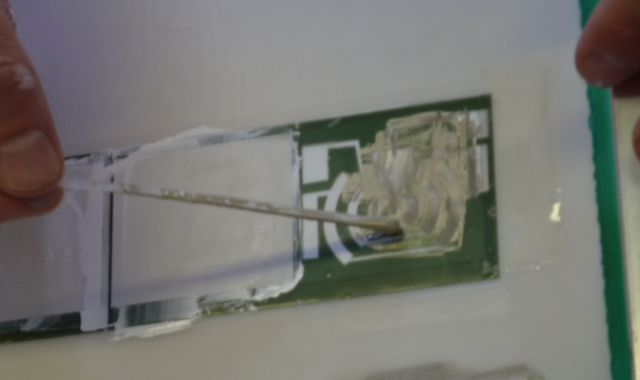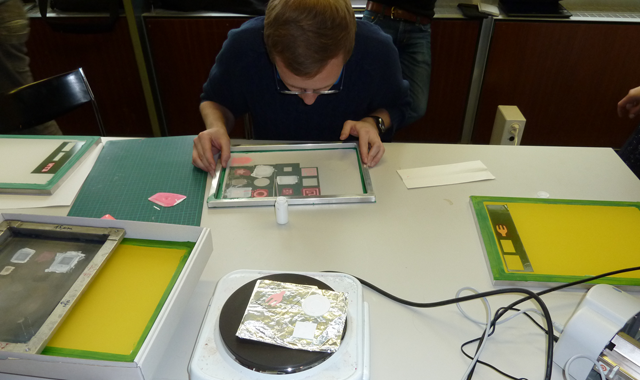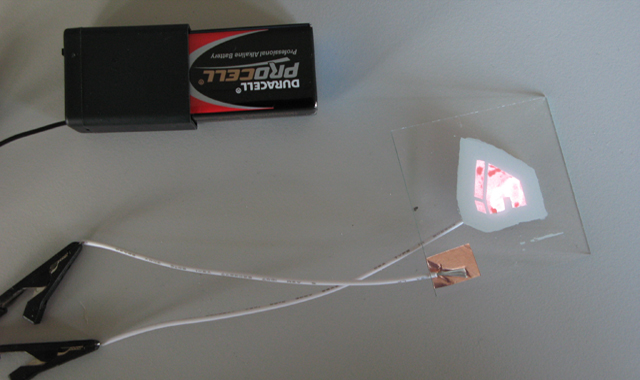The final task of this module was to develop an installation using the Kinect as an interaction medium. This project was mostly based on the knowledge obtained during the first tasks and each one of us explored our own interests or what we thought was the most interesting and with most potential ‘misuse’ of the ‘camera’. All of these projects were developed using Eclipse as a programming platform, also, some of the projects, like Set Me Free, used OOP.
Find students’ work here:
Agata Muszynska:
Animal Extended
Click here to view the embedded video.
Hideaki Takenaga:
Kinect XBox x Waterdrop Screen x Colour Motion
Click here to view the embedded video.
Jesper T. Christensen, Nikola Marincic:
Set Me Free, Sketching Autonomous Probabilistic Structures
Goal of this work is to liberate sketching from the constraints of projection into 2D space, with its static traces, and allow for an embodiment of the mind through gesturing. Using Markov chains to incorporate probabilistic structures, that change the conditions of the space and the properties of the objects drawn in it, allows the sketch to develop on its own, in autonomous – non deterministic way.
Click here to view the embedded video.
Jorge Orozco, Mihye An:
The Fountain in the Space
The Fountain in the Space is an interactive installation that detects objects and projects on them (augments them) differently according to their location in space.
The installation consist of multiple moving objects, a beamer, and a Kinect camera that feeds the data flow of the space (x, y, z coordinates) to a laptop. Using Eclipse as programing platform, the Kinect detects and sorts in real time the moving objects by similar depth area (blob detection). These blobs become masks for a series of videos. A pixel calibration is needed to obtain a one to one projection.
The initial state of the installation is a single video on the whole space. But as soon as the user moves an object, a different video appears on it. The more the object moves far from the wall, the more the video becomes clear and vivid. Finally, the installation gets back to the initial state when there is no interaction.
Click here to view the embedded video.
Magda Osinska:
Kinect DJ
Click here to view the embedded video.
]]>
